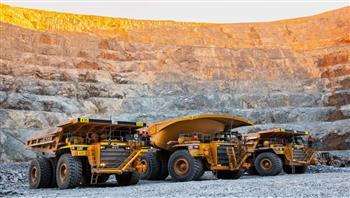Evolution Mining is one of Australia’s most successful gold miners, with a track record of continued growth, increasing safety, and well managed assets. An ASX 100 listed company, it has – since its formation in 2011 – grown in size and performance. Evette Hartley, previously Evolution’s Group Manager for Organisational Development, explains how the company has focussed on growing its people as well as its performance. How has the company built a series of development programs for its middle level management, based on delivering clear and consistent business objectives and outcomes?
Evolution Mining
What was the strategic driver for the investment in leadership development at Evolution?
Over the last few years, the company has grown strongly by acquisition, which has meant we have acquired leaders through these deals. We realised there was a significant legacy around leadership, both in our existing organisation and in those that we had acquired, and different expectations of leadership. We needed to define what we expected of our leaders at Evolution. We are a very growth focused business, so we not only needed to develop leaders for today but also leaders for tomorrow.
Right from the start, we had strong support from the Executive Leadership Team. They recognised that if we wanted to continue to be a growth organisation, with a strategy of acquiring value accretive assets, as well as divesting assets to improve the quality of our portfolio, we would be continuously evolving. That meant we would need a platform which would enable us to better engage and induct our leaders as we evolved.
What approach did you take?
We started in 2012, partnering with an external supplier (HFL) to develop a leadership capability framework to define what leadership meant at Evolution. This was the first step. The next step was to educate our leaders around what successful leadership looks like and build the capabilities through the lifecycle of our leaders, from induction, to performance and development and assessment of potential. Working with HFL, we developed the GOLD leadership development program. GOLD is an acronym for Guiding Our Leaders’ Development – very appropriate with us being a gold mining company.
The GOLD program is a long-term leadership journey, that runs across ten months. We wanted to start with high potential individuals who were able to add value in the longer-term. They were people we really wanted to retain. That was the basis for GOLD.
What were your key design considerations?
A key design consideration for the GOLD program was the intent to help our supervisors, our front-line leaders, and mid-level leaders to build highly competent leadership skills. This cohort is responsible for managing 80% of our workforce, so we viewed them as critical to help us drive culture, efficiency and productivity. We supplemented this cohort with similar level team members across technical functions and head office functions, so the participants were geographically and functionally diverse. Networking turned out to be a high value outcome for participants. Once the pilots were run, given the success of the program, the company decided to expand it into our wider workforce. From a design perspective, we wanted the program to be very practical, experiential, skills based, and containing a variety of delivery techniques (workshops, coaching, self-paced learning, projects etc – so that participants had the opportunity to really embed new behaviours back in the workplace).
Additionally, one of our operations at the time had developed a good business planning process. We decided that, rather than produce a standard frontline leadership program covering management essentials – which can sometimes be a bit of a box ticking exercise – we would focus on making sure great business leadership was at the very centre of our program. It was the first time many individuals had been introduced to the company’s business planning process, and specifically to what that meant for them at their site.
This endeared the program, as you might imagine, to many of our more senior business leaders, and made it really practical and real for participants. We engaged senior leaders to come and deliver some of the business planning parts of the program, and this received great feedback both from the participants and the leaders (who really enjoyed it).
So, business at the centre, what was the participant journey?
The GOLD program design is an intensive blended learning journey. It includes orientation via videoconference or teleconference, followed by face-to-face facilitated modules, each of the three sessions are for two and a half days. The sessions have an HFL facilitator and an Evolution facilitator - partnering was at the centre of our approach.
In between these workshops we have coaching sessions via teleconference. These coaching sessions are done in pods, which are self-selected by the individuals following the first workshop. Before the first workshop the participants may not have met some of the people from the other sites. We have found there are huge benefits to be gained in networking and collaboration by deliberately buddying up participants from different parts of the business. At most workshops we typically have a group of 12 (although numbers varied because of operational priorities). We ask the participants who they want to work with in their coaching pods. Choice will vary. Some may want to work with someone in their own functional area, so they can grow their expertise. Others may want to work with someone outside their area of expertise, enabling them to get a broader sense of the whole mining experience. It was important to us to make the design as participant-centred – participant led if you will – as possible. They need to own their own development journey. We have since expanded this to allowing pods to choose their own coaches as well.
Participants undertake a 360 degree multi-rater survey, which initially was debriefed after the first workshop, but we have since brought this forward to occur prior to the first workshop. Helping existing frontline leaders understand how their leadership is currently being experienced by those around them has been an important part of the participant journey.
These coaching sessions, as well as the whole program, are supported by a wide range of digital assets - all attendees are able to access all the resources and materials, plus additional materials such as podcasts and manager briefing sessions.
We conclude the program with a session with the coach, the manager and the participant to ensure we really hold the participant accountable for their development to date, and ongoing learning.
We have a philosophy around the GOLD program of paying it forward, so that while the participants are achieving this phenomenal self-reflection and growth, they are also able – and expected - to develop their people and their team. This enables the program to be shared with others who may not have had the privilege of being on the program.
You also include continuous improvement projects the participants have to execute?
Yes, and the coaching pods also assist the continuous improvement project teams, which is a huge component of the program. The teams must come up with improvement ideas that help Evolution be more efficient, more sustainable, safer, or more innovative. At the end of the third workshop these teams present their ideas to a panel of senior leaders. Often this means relatively junior managers will be presenting to the Executive Chairman - which is a great opportunity to have an engaging conversation with him and the rest of the senior leaders present. It’s a great learning experience.
Participants get a great development experience, including the opportunity of working with people from different functions and perspectives and styles, and also the fulfillment of getting endorsement from the senior leadership team to pilot their projects.
Many organisations report that the projects are great learning, but the ideas go nowhere. Did any project ideas get adopted at Evolution?
Absolutely. We had very passionate groups. One group worked out a better way of changing over an important piece of equipment, which significantly reduced downtime. Another group greatly improved the treasury management system. Another group implemented a processing improvement in accounts payable which greatly reduced manual processing. We had projects that improved processing, reduced plant downtime, used cameras to identify blockages and to reduce vehicle collisions.
There were also many benefits beyond just those I mentioned. Previously it was often the case that someone would have an idea but didn’t know how to implement it. They didn’t know how to build a business case and to get senior management to endorse it. The new methodology gave us a way to get through such blockages.
Is it fair to say you have deployed a ‘kaizan’ approach to the design?
Yes. From workshop to workshop – continuous improvement – was an important aspect of how we executed the GOLD program. Nearly every time we ran a new program, we would make changes – some small, others major – to the design and running order, swapping exercises in and out, based on participant feedback, and the observations of the HFL and Evolution facilitators. While this was a lot of work, it meant that the design really got to the point where participants were having a completely fulfilling experience, and their energy and learning were maintained during every element.
How did you go about engaging the senior leaders?
The level of engagement of senior leaders is enormous and we think a key success factor of the program. We got a range of senior leaders, including the entire Leadership team, involved in creating the EVN leadership attributes, so they could help shape the journey and messaging from the beginning.
It was important to get them involved so they could realise the impact they can have by helping us link the program to strategic business goals. It was important in our engagement strategy and action planning that our very senior leaders be more visible. We also recognised that business improvement was a critical goal. We needed to leverage our senior managers, who were experienced in business improvement projects, to give us feedback. We engaged our general managers during their monthly operational meetings to take them through the program, help them to understand their role in it and share stories of successes.
We asked the senior leaders to be sponsors for some of these continuous improvement projects. We really put a lot of emphasis on that with our first few groups. The participants would then go back to present their projects to their site leadership teams, so then the participants’ managers could get a sense of what the frontline leaders were achieving, and how the program was benefiting them.
A further benefit was that the senior leaders themselves were exposed to the rich array of talent further down the organisation. We have now put over 120 leaders through the program. It has become a strategic imperative for the business. The business is promoting the course internally, rather than our team having to do it. It has become a business-led program, and part of our standard business leadership strategy. It certainly helps that the business planning and execution aspect of the content is at the very centre of the program.
The program has also been used to help with the integration of new operations as we have acquired them, getting everyone on the same page.
The GOLD program has become an important way of the business units interacting with each other.
GOLD is now part of a suite of offerings?
Yes, we have a suite of offerings. With HFL we have also developed a SILVER program, an intensive two-day management essentials program for those leaders who have transitioned into supervisory or frontline leader roles.
SILVER came from specific business request fromone of our sites to develop a two-day program very much focused on how you can have a quality conversation, and really develop communication and performance management skills. It was a way of quickly addressing performance management issues on the ground before they became a problem and potentially created a dysfunctional team.
SILVER focuses on coaching essentials and performance management (this could be expanded to things like, self-reflection, DISC - understanding self, and effective communication skills). It concentrates on understanding the business plan and ways to connect people to it.
The critical design element was to make sure the two programs were aligned, and the same concepts were being explored, notwithstanding that GOLD went into much more detail and at a higher level.
The latest initiative is that we have also developed a GOLD Plus program. We really wanted to empower our senior leaders to support their front-line leaders who have been on the program, and also involve some of our transformation and effectiveness team. Senior leaders manage a large number of people and are able to influence functions across our business, so we worked with HFL to develop this enhanced program. The GOLD Plus program is designed around the idea that as the participants are more senior, the content and concepts needed to be aligned but uplifted.
A central part of the new design was the development of an Evolution Business Case Study, built in collaboration between the Commercial General Manager and HFL. This takes half a day to run, with a senior leader in the room providing perspective, and asks the participants to imagine they are the Evolution leadership team and need to make a big decision about a fictitious mine. It builds commercial awareness, business acumen, and decision-making skills. It has proved immensely popular with the participants, to the point where the feedback was that it was the “best bit” of the program. It is applied, experiential learning.
Advice for your colleagues in other companies? Things you would do differently?
I think my first piece of advice to my peers would be to be clear about the purpose of the initiative. Our objectives for the GOLD program were to uplift leadership capability to enable better business performance; helping frontline leaders initially when they are in a new role, and to provide a critical learning opportunity for emerging leaders. It was not designed as a retention strategy, and sometimes with a program like this it leads to turnover, because some participants may struggle to reach the standards we want, or struggle with the business concepts and planning pieces we include, or indeed disagree with our approach. Some senior leaders believed that by investing in participants we would naturally retain them. This wasn’t the objective and is never likely to be the case. If I had my time again, I would have been clearer about this in initial conversations with the senior leadership team.
Secondly, we have evolved the program hugely since the first program in 2013. I’d say we have improved it 100% during that time, by listening very carefully to participant feedback, and tweaking many things to get them exactly right. However, while we were continuously improving the program, we didn’t properly communicate this to the business as much as we could have and should have. I think we missed the opportunity to promote the enhancements and improvements we made which elevated outcomes, and also could have been more open about the associated benefits – the projects producing great ideas and efficiencies, and the many internal movements that were facilitated by involvement in the program.
Thirdly, we found the coaching pods were a learning experience. They are hard work and difficult to coordinate, but they have immense value in terms of communication, networking, sharing of ideas and wins and continuing momentum from the workshops. One of the biggest impacts of the GOLD program has been the interaction with our senior management, whether through the leader-led modules during the workshop or the continuous improvement panels. The exposure to the leadership team is also aligned with our engagement action plan across the business, which is making our leaders more visible and more accessible to our people.
Fourthly, we significantly improved our process around briefing participants’ managers. We were seeing really enthusiastic, energised and skilled-up middle managers and frontline leaders, coming back from programs with a new language and toolkits. But at times they were getting blocked or getting pushback from their managers who hadn’t been exposed to the program. These managers often told the participants to keep doing what they had been doing, rather than deploy new ideas, and behaviours.
We realised we needed better manager briefings and manager engagement. We needed more site champions. There was a lot of momentum at the beginning, with high input and engagement from site managers. But we have had some difficulty maintaining that enthusiasm. Our local People and Culture colleagues were hugely supportive when we launched, but then got inundated with a whole number of other really important initiatives, and their ability to help as much as they had at the start was hindered.
Finally, I think we would adopt a more top-down rather than bottom-up approach – and indeed this is what we are doing right now. The senior leaders initially weren’t sufficiently informed, involved, and bought-in to the GOLD process. At very busy high performance mine sites this is difficult to achieve, particularly with the complications of rosters and above and below ground operations. But we have made great progress. Essentially, a top-down approach would have solved the problem we faced above – participants returning to work for leaders who hadn’t been exposed to the same leadership concepts and learning opportunities. Starting at a more senior level would have allowed these leaders to role model the right behaviours to their reports, and also support their reports’ learning. It would have meant their influence was mostly positive, rather than neutral.
In Summary
It’s been a great journey, we’ve learned a lot, and it has been extremely rewarding for all those involved at Evolution – particularly for us in the Organisational Development team. We’ve been overwhelmed by the positive response of many of our participants, who’ve described the program as life changing.
We have learned the detail is what really counts – whether it is personally signed books from the Executive Chairman to participants who have graduated, to celebrating promotions that couldn’t have occurred without the new managers’ attendance on the program, to some of the amazing ideas that have come out of the continuous improvement projects. We’ve also really enjoyed the co-creation process with HFL, and their really committed group of facilitators.
And as you would expect from a company called Evolution, we are still evolving – we are now taking the time to consider what we next to continue to build the skills and engagement of our people leaders even further, with an eye on what is needed now to be successful and what will be needed in the future. We have recently conducted a review of the program, and following feedback are making a further series of changes, many suggested by past participants. The workshops will be conducted on sites, rather than in central business districts. The third day has become a site visit, with participants organising their own learning on that day. This fits with our philosophy of trying to ensure participants take responsibility for their own learning. We’ve digitised lots of the communications and are using applications that host all materials and communications and, of course, the development will continue.
Evette Hartley was the Group Organisational Development Manager at Evolution Mining from 2012 until December 2019.
HFL Comment
Working with Evolution Mining has been a tremendous experience for HFL. The OD team there leaves no stone untouched, ensuring that whatever can be done to improve the learning experience for participants is done. Evolution have helped us stretch our thinking, designs and delivery, and we’re better consultants as a consequence of the collaboration. And Evette is right – the coaching pods are hard work to organise and deliver, but they are worth their weight in, well, gold. Alistair Gordon
Key Takeaways
-
If you want to get the business fully engaged in a leadership program, centre the program on business takeaways created through great leadership.
-
Senior leader involvement is a critical success factor, regardless of the level of the program (even for front line leaders!).
-
Start by defining what great leadership looks like for your business.
-
Evolving the offering is critical – “we improved it 100%”.
-
A key measure of whether continuous improvement projects are worth including is whether the best of the ideas actually get implemented.
-
Linking the program to real business planning and objectives made it real and garnered huge support and involvement for the program from the business.
About Evolution Mining
Evolution Mining is a leading, growth-focussed Australian gold miner. Evolution operates five wholly-owned mines – Cowal in New South Wales; Mt Carlton, Mt Rawdon, and Cracow, in Queensland; and Mungari in Western Australia. In addition Evolution holds an economic interest in Ernest Henry, in Queensland, that will deliver 100% of future gold and 30% of future copper and silver produced from an agreed life of mine area. Outside of the life of mine area Evolution will have a 49% interest in future copper, gold and silver production from Ernest Henry. Evolution Mining’s diversified portfolio combining production and growth has made it become the second largest ASX listed gold miner.




